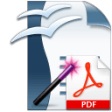Used Microsoft Excel for Windows? Share your experience and help other users.
Editors’ Review
Microsoft Excel 2016 for Windows is a workhorse of a spreadsheet software, offering powerful methods for summarizing, analyzing, exploring, and presenting your data.
Pros
Excel comes as part of Microsoft Office 365: Microsoft Excel is the spreadsheet portion of the Microsoft Office applications. For $69.99 a year, get the Office 365 Personal edition, which along with Excel, comes with Word, the word-processing workhorse; PowerPoint, the ubiquitous slideshow app; OneNote, for note-taking across platforms; Outlook, a full-featured email service; OneDrive, Microsoft's cloud storage service; and Skype, for voice and video calls.
For $99 a year, subscribe to the Office 365 Home edition, which includes the same productivity apps and lets you share your subscription with four other users.
If you'd rather just buy Office and be done with it, for $149.99, you can purchase the Office Home and Student 2016 for PC edition, which includes Word, Excel, PowerPoint, and OneNote.
Or buy Excel separately: If you don't need the other apps that make up the Office apps, you can get the Microsoft Excel 2016 separately for $129.99. The standalone Excel for Windows includes bug fixes and improvements, but it doesn't get you an upgrade to the next major edition of the software. The standalone version also doesn't include OneDrive services and Skype.
Tons of formulas and functions: With formulas, you can perform calculations on data in your Excel spreadsheet, such as finding the total for a row of numbers. You can quickly access formulas via Excel's formula bar.
A good part of what makes Excel so powerful is the breadth of its functions, which build on formulas. Among the most useful are the SUM, IF, LOOKUP, VLOOKUP, MATCH, CHOOSE, DATE, DAYS, FIND, and INDEX functions. Excel also comes with specialized functions for cube, database, date and time, engineering, financial, information, logical, lookup, math, statistical, text, and Web functions.
Pivot tables: Along with functions, Excel's not-so-secret weapon is the pivot table. Pivot tables let you quickly make sense of data in rows and columns by analyzing and displaying a summary of your data. Excel also comes with what Microsoft calls "slicers" -- buttons you can click to filter tables or pivot table data.
VBA: It is not the beloved Visual Basic, but Visual Basic for Applications, or VBA, lets you automate repetitive tasks and extend Excel, create custom user interactions in Excel spreadsheets, and work with other Office products. You can also add optional commands to an Excel file via Excel add-ins.
Templates: Excel offers a broad collection of templates that give you a running start in presenting your data and let you add polish to your spreadsheet files. You can choose from a range of personal templates, including a back-to-school planner, weekly meal planner, streaming show list, group event planner, money manager, and personal budget manager. Business templates range from those for a weekly assignment schedule and 12-month calendar to annual financial budget and channel marketing budget.
Office in cloud: As with the other apps in the Microsoft Office suite, Excel 2016 lets you store, sync, and edit your spreadsheets online, via Microsoft's OneDrive cloud service.
Collaborate: Through OneDrive, you share and work on spreadsheet files with colleagues via real-time collaboration on documents.
Moving across platforms: In addition to the PC version of Excel, Microsoft has spreadsheet apps for Mac, Android, iPhone, and the web via a browser.
Advanced data visualization: The addition of new chart types, such as Waterfall, Box and Whisker, and Treemap charts, makes Excel 2016 a more robust tool for presenting data visually.
Cons
Pay for the power: If you need an industrial-strength spreadsheet, you want Excel. But if you're just doing simple calculations, Excel's price may be a bit much, so you should consider another spreadsheet program, such as Google Sheets.
Steeper learning curve: Excel’s vast array of features can be overwhelming for new users, especially those unfamiliar with advanced tools like pivot tables or VBA. A more intuitive onboarding process could ease the transition for beginners.
Subscription dependency: With Microsoft’s shift toward a subscription model for Office 365, users seeking standalone tools may find themselves tied to recurring costs if they wish to benefit from continuous updates.
Microsoft Excel 2016 remains unmatched in its depth and versatility for professional use. Compared to Google Sheets, Excel offers far superior performance with large datasets, more advanced formulas, and indispensable features like VBA for automation.
However, Google Sheets excels in collaboration due to its seamless integration with the Google ecosystem and free access. LibreOffice Calc, on the other hand, provides a capable free alternative to Excel, with similar functionality but lacking the polish, performance, and cloud integration Excel delivers.
For casual users, Google Sheets or LibreOffice may suffice, but Excel is the definitive choice for heavy-duty data analysis and business applications.
Bottom Line
The Windows version of Microsoft Excel 2016 is a powerful, dependable spreadsheet application that can crunch just about any number. With features like pivot tables, VBA scripting, and advanced data visualization tools, it continues to be a gold standard in spreadsheet software.
While the price may be steep for casual users, professionals and businesses will find the cost justified for its robust capabilities and seamless integration with the Office suite. In 2025, Excel remains a cornerstone for data management and analysis, whether for personal use or professional needs.
What’s new in version 2016
- Improved autocomplete.
- TEXTJOIN combines text from multiple ranges.
- CONCAT, like CONCATENATE, but better.
- IFS for those tired of typing complicated, nested IF functions.
- SWITCH evaluates an expression against a list of values in order.
- MAXIFS returns the largest number in a range, that meets a single or multiple criteria.
- MINIFS functions similar to MAXIFS, but it returns the smallest number in a range.
Used Microsoft Excel for Windows? Share your experience and help other users.
Explore More

FlarabySWF
Trial version
SSuite Communication Sidebar
Free
Facebook Alarm
Free
AutoGTD Outlook Hotkeys
Free
More Add-in
Trial versionSumMatch
Trial versionReminder Forwarding 2007
Trial versionCommuniGate Pro
Trial version
OpenOffice Writer To PDF Converter Software
Trial version
yWriter4
FreeJob Cost Manager
Trial versionData Sheet Program for Microsoft Excel
Trial version